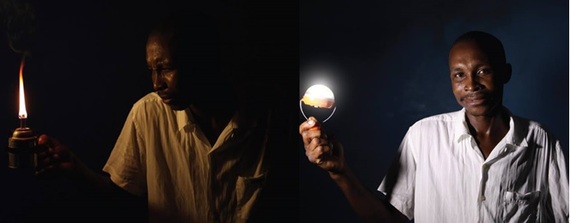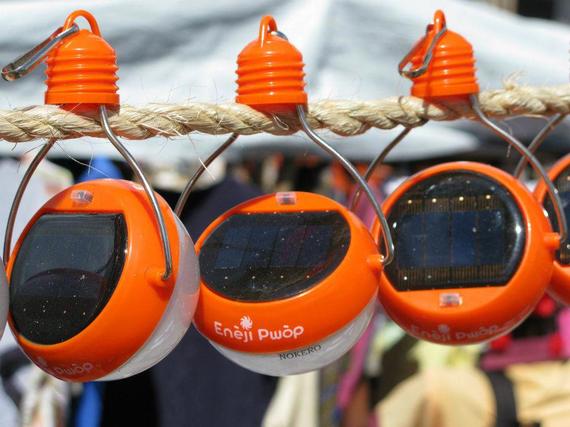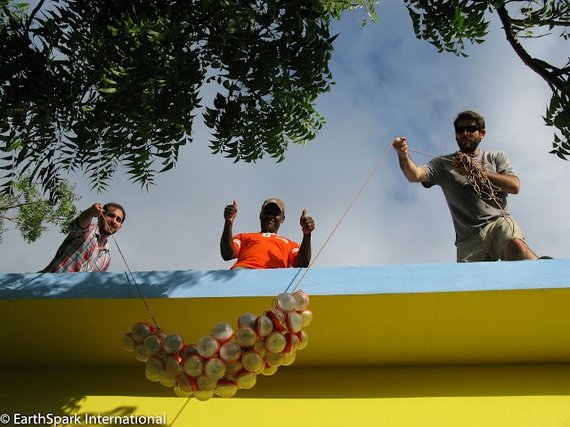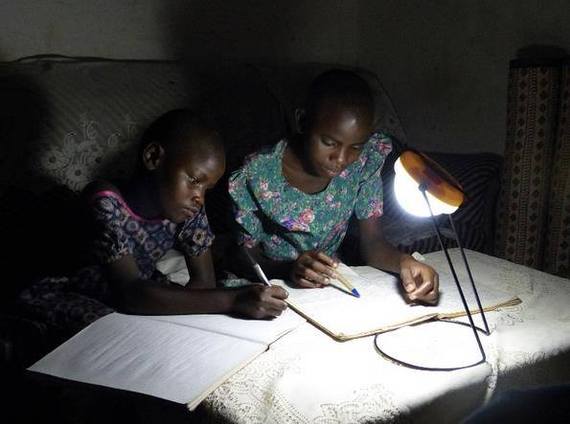Here in the US, we think about energy poverty as being oceans away in Africa or Asia - see President Obama's new Power Africa initiative. But while the problem in these geographies is acute, it turns out we have a tremendous problem brewing in our own back yard. Several years after a cruel hurricane season in Haiti, energy issues still lie at the heart of much of the residual poverty experienced by communities and companies alike. What the country desperately needs is a new "Haiti Power" initiative to catalyze off grid clean energy and bring light, and life to its impoverished residents.
Haiti's struggles are closely tied to energy poverty: less than 25% of households are connected to the grid, and the existing infrastructure is plagued by unreliable generation, transmission and distribution, with total system losses hovering around 50%. At the same time, half of the country's population still lives on less than $1 a day, and the country has the second largest income disparity in the world. That leaves the average rural Haitian to spend 6.5% of her annual income on kerosene and candles for home lighting (compare that to the average American family who spends 0.5% of their much larger annual income on electricity).
That's not to say the government isn't working to address its energy access problems. In 2012 President Michel Martelly announced a new rural electrification program, with the aim to electrify 200,000 households in two years. Despite a controversial reliance on new coal plants and grid extension, the program, "Ban m limyè, Ban m lavi" ("Give me light, give me life") does include important provisions for access to end-user credit to support deployment of small solar home systems. The program also aims to install solar streetlights in every municipality and repair power lines in low-income neighborhoods in Port-au-Prince.
Here's the catch: Haiti is currently constrained in its ability to borrow internationally because of the agreement made to cancel its debt following the earthquake. At the same time its private cost of capital in country remains high because of perceived political and other risks. As is the case across much of the developing world energy markets access to finance is the biggest barrier to light and life.
In order to overcome its lack of capital Haiti needs the international community to step up to the plate and provide access to capital to expand off grid efforts. Luckily the United Nations Foundation has been working to compile those financing needs and will make them publicly available in mid-November (see here). The UNF database will include information on 141 Practitioner Network members just 10 of which working in Haiti need $15 million, a very manageable sum.
This financing would expand the great work of many small companies and non-profits working to deliver energy services associated with the UNF Energy Access Practitioner Network. One of my favorite, EarthSpark International, has introduced "clean energy retail" through its Haitian brand Enèji Pwòp (meaning "Clean Energy" in Haitian Creole), with a network of 102 retailers across the country benefiting nearly 35,000 Haitians. EarthSpark was one of the first organizations to become a Kiva Experimental Partner, lending clean energy products instead of money to loan recipients to help them grow their businesses. EarthSpark has also recently launched the first pre-paid micro-grid in Haiti through EKo Pwòp (meaning "Clean Community Electricity" in Haitian Creole). Launched in November 2012, the system is providing continuous electricity to 14 households, and will be scalable to 400 customers. EarthSpark expects to solarize the system in a year, and within five years, hundreds of small towns will have access to locally-generated affordable, reliable, and sustainable power.
But Earthspark is not alone. From Sirona Cares who has been supplying basic electricity to homes in Haiti for two and a half years to The Solar Electric Light Fund (SELF) which first provided solar to health centers run by Partners in Health (PIH) to Haiti's only designer and manufacturer of solar panels Enersa off grid clean energy entrepreneurs are busy delivering clean energy today.
Richenda Van Leeuwen, Executive Director, Energy and Climate, Energy Access Initiative at the UN Foundation describes their impressive efforts as: "capital constrained and in need of a range of investment in order to scale effectively." With finance and government backing in place however she believes "energy access in Haiti should be achievable in a relatively short time delivering benefits in terms of education, income, environment and health".
But the only way to get there from here is finance, finance, finance. And that will require political support. That's why it's time for a new Haiti Power initiative, focused on fixing the losses in the grid, and jumpstarting off grid clean energy. It's the only way to bring the people of Haiti light, and life.




